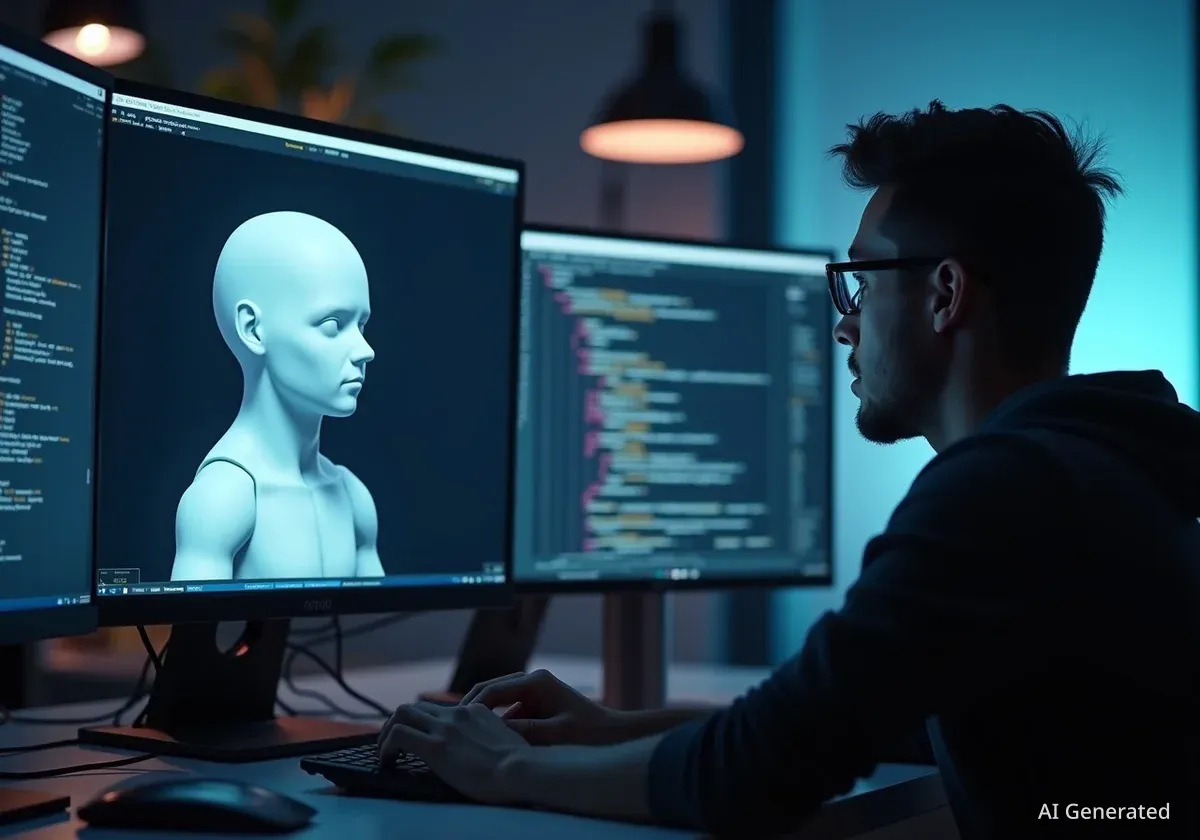Alibaba has introduced a new open-source artificial intelligence model named Wan2.2-animate, developed to generate digital human videos. The model specializes in character animation and replacement, allowing creators to apply movements from a reference video to a static character image.
This release marks the second digital-human video generation tool the company has made public in the last month. It underscores a continued focus on developing and sharing advanced AI technologies for content creation.
Key Takeaways
- Alibaba has launched Wan2.2-animate, a new open-source AI model for video generation.
- The tool animates character images by transferring motion and expressions from a reference video.
- It features advanced relighting technology to seamlessly integrate characters into different scenes.
- This is the second model in Alibaba's Wan2.2 series released in the past month, following the Wan2.2-S2V tool.
- The complete Wan series has accumulated over 30 million downloads across various platforms.
Core Functionality of Wan2.2-Animate
The primary function of Wan2.2-animate is to bring a still character image to life using a separate video as a motion guide. The model analyzes the reference video to capture detailed movements, including body language and subtle facial expressions.
It then applies this captured motion data to the provided character image, generating a new video where the static character performs the actions from the reference footage. This process allows for the creation of animated sequences without traditional, labor-intensive animation techniques.
Another key capability is character replacement. The model can take an existing video and substitute the person in it with a character from a source image. During this process, it preserves the original performance's expressions and movements, effectively mapping them onto the new character.
Part of a Broader AI Initiative
Wan2.2-animate is a component of Alibaba's larger Wan2.2 video generation series. This initiative focuses on creating accessible, open-source AI tools for various video production needs. The series has gained significant traction in the developer community, indicating strong interest in AI-driven content creation tools.
Technical Approach to Animation
The model employs a sophisticated method to achieve realistic animation. It deconstructs human motion by identifying and breaking it down into fundamental skeletal patterns. Simultaneously, it isolates and captures detailed facial expressions from the source video.
This dual-analysis allows for precise control over the final animation. By separating skeletal motion from facial expressions, the system can reproduce complex and nuanced movements that are often difficult to animate manually. This approach helps create characters that appear more natural and lifelike.
According to the company, this technology significantly accelerates the creation of realistic animated characters. It automates tasks that would otherwise require many hours of work from skilled digital artists and animators.
Solving the Challenge of Scene Integration
A common obstacle in digital character replacement is making the new character look like a natural part of the existing scene. Mismatched lighting, shadows, and color can make the final video appear artificial.
Advanced Relighting Technology
Wan2.2-animate addresses this issue by incorporating an auxiliary technology known as relighting Low-Rank Adaptation (LoRA). This system automatically adjusts the appearance of the inserted character to match the lighting conditions of the video's environment.
The relighting LoRA technology analyzes the scene's lighting, from simple shadows to more complex and dynamic light sources. It then modifies the character's shading and color to ensure it integrates seamlessly. This capability is crucial for producing professional-quality video where the character replacement is not immediately obvious.
Applications and Industry Impact
The development of Wan2.2-animate is expected to benefit content creators across several industries. Professionals in film, television, and advertising can use the tool to simplify complex visual effects and animation workflows.
The model also has significant potential in the gaming and short-form video sectors. Game developers can use it to create character animations more efficiently, while social media creators can produce unique content without needing expensive software or extensive animation skills.
By simplifying animation processes and reducing production overhead, tools like Wan2.2-animate can lower the barrier to entry for high-quality content creation in both entertainment and commercial applications.
This follows the release of another model last month, Wan2.2-S2V (Speech-to-Video). That tool was designed to convert portrait photos into high-fidelity avatars capable of speaking and singing, further expanding the toolkit available to digital creators.
Availability and Open-Source Commitment
In line with Alibaba's commitment to the open-source community, Wan2.2-animate is freely available for developers and creators. The model can be downloaded from popular platforms including Hugging Face, GitHub, and ModelScope.
The company has a history of contributing to open-source AI development. To date, the Wan series of models has been downloaded more than 30 million times across various open-source communities and third-party platforms. This widespread adoption highlights the demand for powerful and accessible AI tools in the creative technology space.





